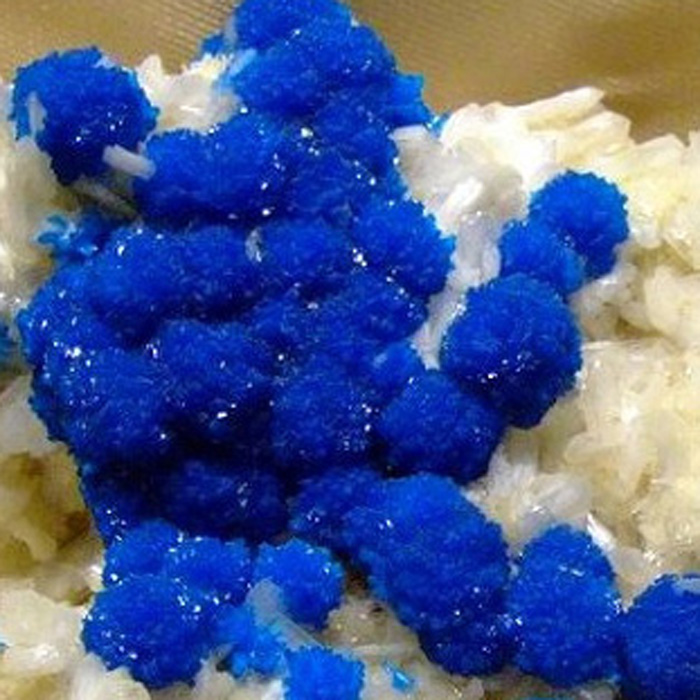Scientific Name: Hydrous calcium vanadium silicate
Group: Silicates – phyllosilicates
Chemical composition: Ca(VO)Si4O10.4H2O
Colors: Blue to greenish-blue
Hardness: 3 to 4
Formation: Aggregates of prismatic crystals, platelets and rosettes; Prismatic form
Principal Sources: India; Oregon, USA
Special Notes: Cavansite, whose name is derived from its chemical composition, calcium vanadium silicate, is a deep blue hydrous calcium vanadium phyllosilicate mineral, occurring as a secondary mineral in basaltic and andesitic rocks along with a variety of zeolite minerals. Discovered in 1967 in Malheur County, Oregon, cavansite is a relatively rare mineral. It tends to form crystal aggregates, generally in the form of balls, up to a couple centimeters in size. Sometimes the balls are coarse enough to allow the individual crystals to be seen. The color of cavansite is distinctive, almost always a rich, bright blue. It is often found sitting atop a matrix of zeolites or apophyllites.

